There are a variety of different types of speakers on the market today. This article will cover the main types of speakers and their categories. If you’re looking for a speaker, you know the category it falls into, but not what makes a speaker in that category? This article is going to explain each of those.
Speakers can be categorized into different types according to their physical properties, such as size and weight. But also by their connectivity, frequency range, purpose, and locations.
Let’s get started with the primary category, which is the size and location.
Types of speakers by size and location
Bookshelf Speakers
Bookshelf speakers are small speakers that can be placed on a shelf or stand. Bookshelf speakers are usually used in home audio systems. They are small or medium-sized, and many options are available on the market with different price ranges and quality. Some are low quality, but you can get a nice pair of bookshelf speakers with the budget.

Bookshelf speakers are the most common type of speakers found in homes. They are small enough to be easily placed near the TV or stereo system but powerful enough to fill a room with sound. They are perfect for people who don’t want the hassle of buying multiple speakers or prominent floor-standing speakers.
Tower Speakers
Tower speakers are also called floor-standing speakers. They are tall and can stand on the ground or be mounted to a wall. These types of speakers tend to have more bass than a bookshelf speaker due to their larger size, which allows for bigger drivers with more outstanding performance capabilities. Still, they need space in your room, so you may want to measure before purchasing one if your living conditions require them not to take up too much space. The price also affects a lot.
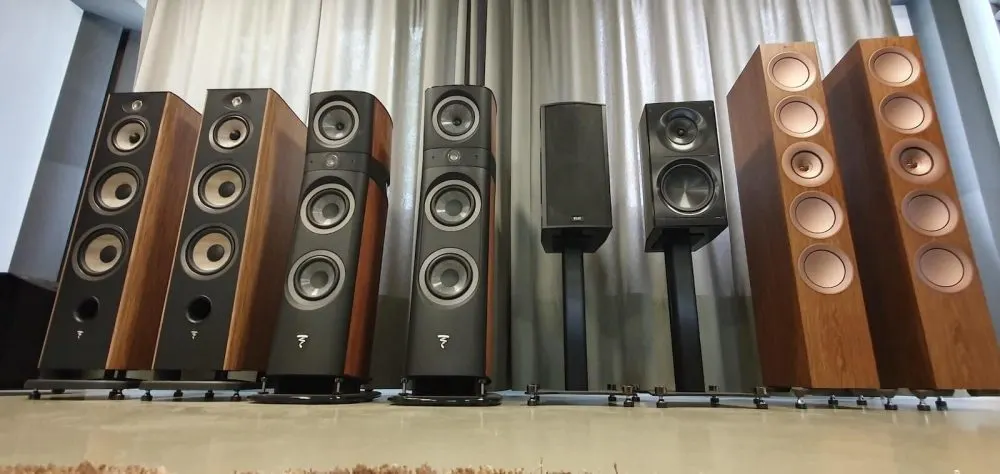
Tower speakers are commonly used in home theater systems. They are often used in surround sound systems, but they can also be purchased as a pair for two-channel stereo applications if there’s no space in your TV area or furniture to install bookshelf speakers.
Soundbar speakers
A soundbar is a long bar speaker. Its primary function is to improve the audio quality of your TV by adding more depth and clarity to it produced with two small speakers in one enclosure with inputs for TVs, Blu-ray players, cable boxes, or game consoles. Soundbars might not be as good as stereo speakers, but they’re easier to install.
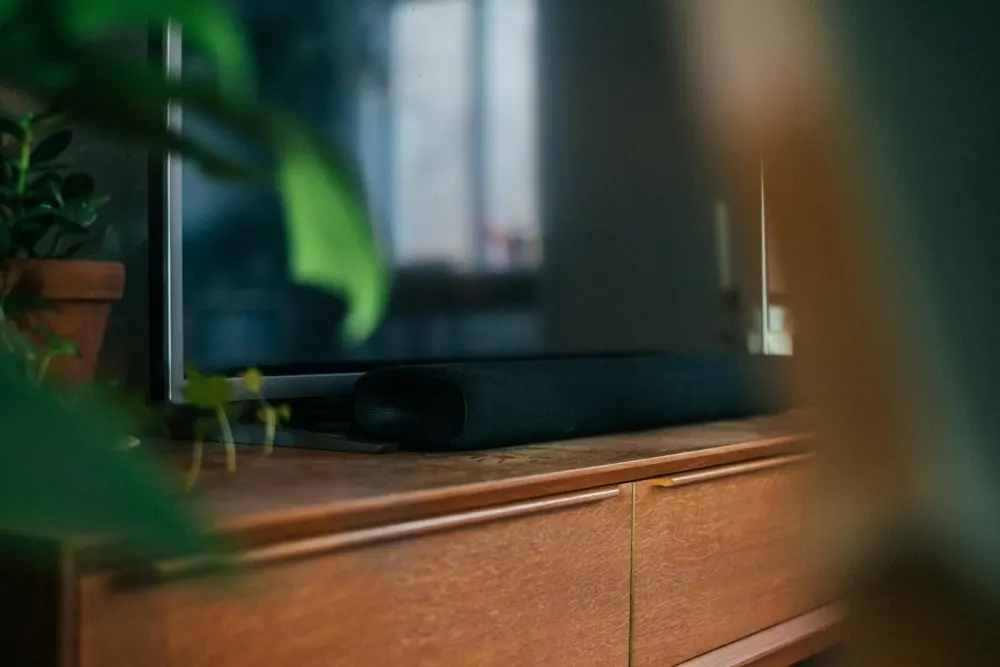
Soundbars are usually installed on top of the TV or below it so they blend into your surroundings. They produce good sound without taking up too much space because most models can be placed under 30 inches wide, which makes them suitable even for smaller flatscreen TVs that don’t have enough room for full-size tower speakers.
Built-in speakers
Built-in speakers may not be as great sounding as tower or bookshelf speakers, but they can be installed within a TV. They are usually small and weak, so you shouldn’t expect them to produce thunderous sounds with deep bass, but watching movies in your living room without too much space is a good option.
In-ceiling and in-wall speakers
In-ceiling and in-wall speakers are the best options in terms of appearance. They provide decent performance with a wide sound dispersion due to their omnidirectional design. They look good because you don’t see them from the outside, and placing a speaker on a shelf or stand requires no clutter on your living room floor or space.
The downside is that you have to hire someone who knows what they’re doing when it comes to installing these types of speakers properly, so make sure if you go this route, that person has some experience, just like any other installation project involving electricity could be hazardous which means hiring an expert would be better than trying yourself without knowing what needs to be done.
Outdoor speakers
Outdoor speakers are also called weatherproof speakers. They can be placed outside in a covered area so they won’t get damaged by rain, snow, or exterior temperatures. These type of speakers have unique features that protect them against water, UV rays, humidity, and other elements to ensure you’ll never have problems with them when it comes to their performance, even after several years of use under different conditions.

Weatherproof outdoor speakers come at a higher price than indoor models because their design is more complex, which requires additional components such as metal grilles for the woofer diaphragm instead of plastic ones used by standard weatherized home audio systems made for indoors like a bookshelf or tower speaker sets which provide good sound inside your living room but should not be exposed to exterior elements.
Outdoor speakers come in handy when you have a pool or garden area where you’d like to listen to music, as they are not affected by the weather and can be installed on different surfaces such as walls, decks, ceilings, roofs, etc.
Portable speakers
Portable speakers are smaller than average and usually come in the form of a cylindrical column. They can be used to play music from your phone or tablet. They have rechargeable batteries, so you don’t need power sockets nearby and enjoy sound wherever you want without carrying bulky speakers, which would take up too much space.
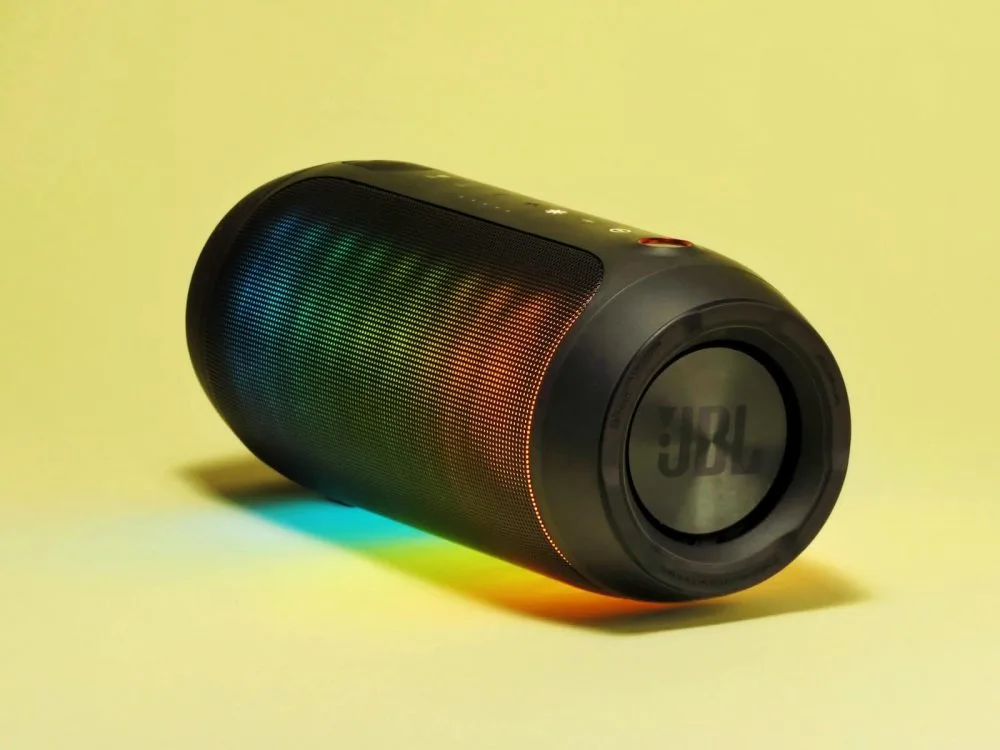
You can take them on trips, camping with your friends, or even to the beach if they are waterproof. They usually have a built-in microphone for hands-free phone calls, and some advanced models can be connected to other speakers via Bluetooth or an audio cable (Mini Jack) so that you listen together in a synchronized mode, making it more fun, especially during parties.
Now that we’ve explained all the types of speakers available by size or location, let’s go over the types of speakers by their frequency ranges.
Types of speakers by frequency range
Subwoofer or bass speaker
Subwoofers are speakers that handle deep bass frequencies. They come in different sizes, but they’re all big and bulky to allow enough air movement to produce lower tones. They are suitable for music genres such as rock, pop, or jazz, where you need accurate guitar sounds from a subwoofer speaker.
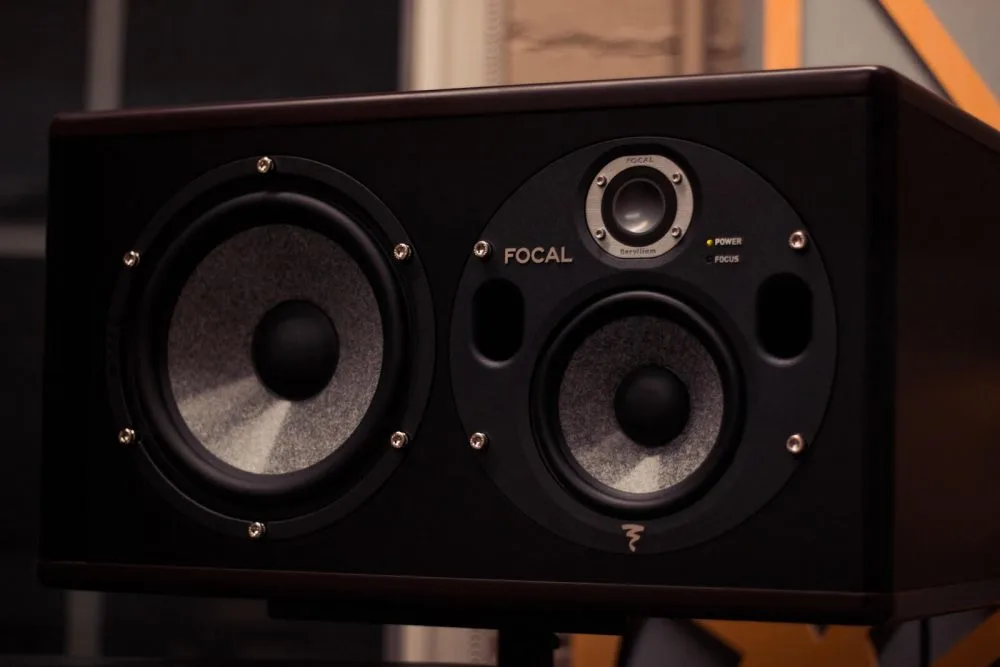
A subwoofer is essential in a high-quality sound setup as it provides the lower tones that give a track more depth. You can even feel as if there’s an actual drum playing. It makes listening to music much more fun and exciting, so having one active in your living room is necessary for audiophiles who want to experience first-hand what good sound feels like through its vibrations.
Mid-range/midbass drivers
Mid-range drivers are also called midbass drivers because their frequency range is between your tweeters (high end) and subwoofers (low end). They usually have large diaphragms of up to 18 inches wide. Hence, it’s easy for them not only to produce vocals by themselves without any additional assistance from other types of speakers but even reproduce hard-hitting drum beats or string instruments with a lot of pressure.

Midrange speakers are the most important type in any sound setup as they produce all the midrange frequencies that give the music its tone and character by reproducing guitars, pianos, or vocals that you can’t get from an inferior system, no matter how big your subwoofer is if it doesn’t have enough mid-bass drivers to back it up with lower tones. That’s why we recommend every speaker set out there should include at least one good quality mid-range speaker so you don’t miss all those details and subtleties which make each track unique and different from others.
Tweeters
Tweeters handle high-pitched sounds up to 20KHz, the highest frequency a human being can hear. They’re usually small dome-shaped speakers that produce very sharp sounds and give crystal clear volume from high-pitched instruments such as cymbals, high hats, or violins.
Tweeters are often combined with mid-range drivers to support them since they have a limited range of frequencies. Hence, it’s best not to use tweeters alone unless your sound system has more than one set of these types of speakers installed at different angles to achieve an enveloping surround effect where each speaker is responsible for its designated area around your living room, giving you a multi-dimensional listening experience like if several musicians were playing live music inside your house instead of just two.
Now let’s go over the different types of speakers by application.
Types of speakers by application
Surround speakers
Surround speakers are designed to sit behind your listening area, usually on the wall or inside the ceiling. They’re meant to achieve a true surround sound effect where you can hear sounds coming from all around you as if there was somebody playing music in your living room instead of just using two standard stereo speakers that give an unnatural separation between left and right channels via their physical location by default which is why it’s best not to use them alone unless they have enough power for reproducing low-end frequencies too. Surround speakers are popular for watching movies.

Surround speakers can come in different forms and sizes, including bookshelf speakers, small satellites, in-wall or in-ceiling, etc. Different surround sound setups exist, such as 5.1, which consists of five speakers plus a subwoofer, and 7.1, adding two extra rear speakers.
Center channel speaker
Center channel speakers are located in the middle of your living room, and their main purpose is to reproduce vocals and dialogues that occur right in the center of a movie scene. They’re usually paired with regular stereo or surround speakers so you can hear all characters’ voices coming from one direction while background music, sound effects, or other dialogue come from another speaker, which gives this type of setup its name.
Studio monitor speakers
Studio monitor speakers are the opposite of regular stereo or surround speakers since they reproduce music accurately and precisely without adding color. You’ll often see them in recording studios where every tone must sound like the real thing.
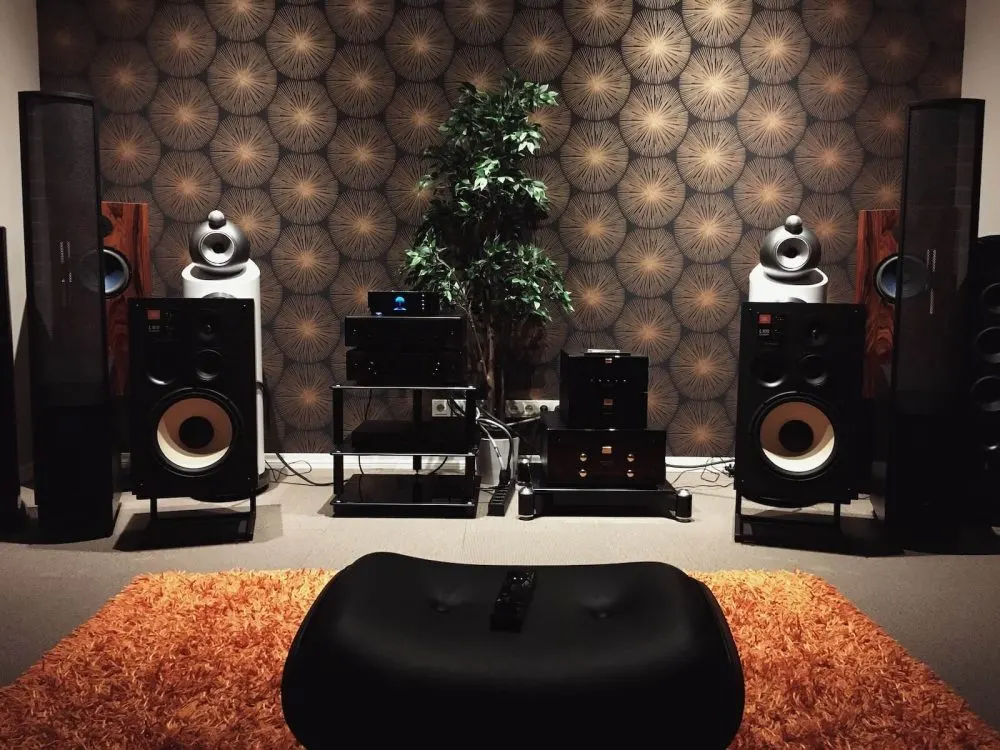
Monitor speakers have come with a flat frequency response for maximum accuracy, so make sure not only your listening room has enough acoustic treatment but even that you sit close enough to these types of speakers; otherwise, their lack of bass could give an unnatural impression on low-end frequencies because you won’t hear any distortion coming from a too far away position.
This type of speaker is excellent for audiophiles and engineers who want to hear music as it was initially produced and recorded.
Finally, let’s check out the types of speakers by connectivity.
Types of speakers by connectivity
Wired speakers
Wired speakers are the most common types of speakers, and they use cables that connect to a power source or audio sources such as an amplifier, mixer board, or soundboard, which is why they’re usually associated with standard stereo speaker sets since most people don’t have surround systems in their living rooms.
Wireless speakers (Bluetooth, RD, or WiFi)
Wireless speakers are the most convenient types of speakers you can get today because they use wireless connectivity via Bluetooth, RD, or WiFi, which means that all you have to do is plug them into a power outlet and then connect your audio source wirelessly through either an app or dedicated buttons.
This type of speaker usually comes with multi-room support, so if you also own one in another room, such as your bedroom, for instance, it will be part of the same system allowing you to listen to different music at home without having more cables laying around than necessary like on wired speaker systems.
There’s no doubt that wireless speakers offer great convenience, but some audiophiles complain about their lack of sound quality, mainly because the popular speaker brands aren’t focused on sound quality as much as they’re focused on comfort and connectivity.
You can get a pair of high-quality bookshelf speakers with Bluetooth connectivity and still enjoy great sound in a traditional wireless speaker system.
Smart speakers
Smart speakers are wireless speakers with a built-in digital assistant such as Amazon Alexa, Siri, or Google Assistant, which means they can do more than regular speaker systems.
They usually connect to your WiFi network and stream music via online services like Spotify, Pandora, or Apple Music, but some of them also have Bluetooth connectivity, so you’re not forced to use streaming all the time if that’s not something you enjoy doing.

These types of speakers offer decent sound quality and convenience, and comfort. Still, their main downside is that they don’t always sound as good as regular stereo speakers, which makes them less suitable for audiophiles, and the price is also higher than regular wireless speakers.
Choose the best speaker type for your needs
As you can see, there are many types of speakers to choose from, each with pros and cons.
The important thing is that you get the best speaker type for your needs which means understanding what kind of room you have. Do I want an outdoor or indoor speaker system? What about space limitations? If I live in a condo with neighbors on either side, maybe bookshelf speakers would be better since they’re not as loud as tower speakers but don’t take up too much space like surround systems.
If you’re all about comfort and connectivity, get a wireless speaker system with multi-room support and Bluetooth for decent sound quality.
If you’re an audiophile, get one of the high-end stereo speakers with excellent sound quality, but they don’t offer as much convenience or comfort because they use wired connections.
If you want to keep it simple, go with a smart speaker, a regular wireless speaker, and a built-in digital assistant. If all you care about is voice control instead of music playback, this type of speaker may be right up your alley since they can do more things than traditional ones without compromising audio performance too much, according to many consumer reviews.
jack bering
Friday 21st of October 2022
My mini speaker died and I need a new one. My requirements are to plug into my computer headset plug (it's a mini plug in) and have a volume control independent of my computer. I am unable to understand your explanation of what's what in your instructions with each display of speakers